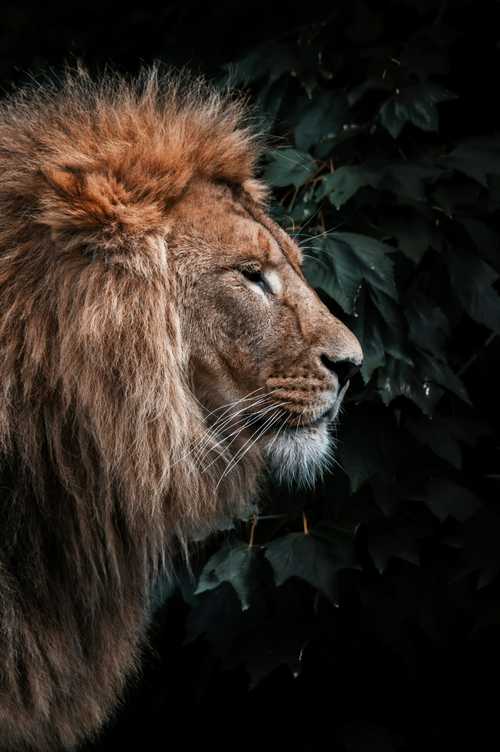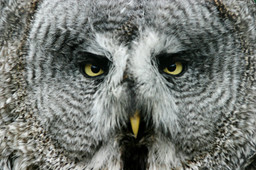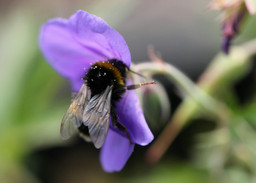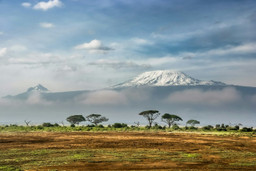
David Attenborough enters the ‘Secret World of Sound’
As anthropophonic sound pollution increasingly mutes the sounds of the natural world, it’s well past time for this subject to be broached in the mainstream, to help take the pulse of the imperiled living world.
In the UK, a new series presented by David Attenborough has premiered on Sky Nature which may help to prompt this conversation. All three episodes are currently available on-demand on Now, while two and three will be broadcast on Sky Nature on Marsh 3rd and 10th.
Any natural history series fronted by the veteran broadcaster is a cause for celebration, but this one is particularly attuned with earth.fm’s mission to share natural soundscapes as a way to encourage a deeper connection with the natural world. Check out the trailer!
Secret World of Sound “uses cutting-edge audio technology to explore the extraordinary ways that animals hear and produce sound”. Across its three episodes, filmed in 4K ultra-high definition, the series will explore sounds made by animals and the role they play in relation to predation (‘Hunters and Hunted’), mating (‘Love and Rivals’), and growth (‘Finding a Voice’). Each installment presents the in-depth stories of how up to eight species use sound, from buff-tailed bumblebees loosening pollen with the sonic bombardment of their wings, to great gray owls locating voles under snow cover, “tap-dancing” kangaroo rats, certain bird species’ astonishing mimicry, baby caiman communicating with one another from within their eggs, and nocturnal sonic battles between lions and hyenas.
Time to listen
This subject matter brings Attenborough full circle, back to one of his first jobs in natural history film making: as a wildlife sound recordist. (Listen to an interview about these experiences.)
As series producer Sharmila Choudhury notes, the series “reveals a fascinating side to the natural world that is often overlooked”, allowing it to “offer […] a surprising and intimate view of the natural world” and “explore […] how animals communicate through their noises and how this influences their behaviour”. Each episode also ends with a short behind-the-scenes section revealing technological innovations such as “specially adapted cameras and laser vibrometers” (which amplify the vibrations caused by noise) used to record sounds too quiet or too far outside the frequencies detectable with the human ear, microphones small enough to be inserted into challenging environments like the inside of a beehive, “super sensitive hydrophones […] to record […] the faintest communications between fish”, and even an acoustic camera (an imaging device which uses a microphone array to represent the source of a sound, usually used for locating gas leaks).

Viewers with a sensitive ear may be gratified to note that, unlike many similar documentaries which “add audio effects from an existing library in post-production”, Secret World of Sound utilizes sound recordings made during filming – coinciding with the spirit of earth.fm! In addition, the series’ focus on natural sound means that ever-present scores which guide the viewer’s emotional response (like those composed by Hans Zimmer for the Planet Earth franchise) have reportedly been used more sparingly here.
A life dedicated to the natural world
As for the series’ presenter, it might seem that such a beloved broadcaster – who has been a fixture on screens for an astonishing 71 years – needs no introduction, but his ubiquity may obscure his achievements and the enormous range of places, people, and animal behaviors which we’ve been privileged to witness alongside him.
Despite being disqualified from presenting (“teeth […] too big”, according to a BBC memo), Attenborough nevertheless first co-presented in 1953. The next year, he was obliged to take on this role solo in Zoo Quest, when designated presenter, London Zoo reptile house curator Jack Lester, fell ill. (Watch episodes here.)
Zoo Quest was made at a time when our relationship to the natural world (and its fragility) was very different (before Attenborough’s own programs helped to “change […] how we view the natural world and played a vital role in shaping the importance we now place on protecting our fragile environment”): the show documented the collection of animals from the wild for the zoo’s collection. This practice is now only carried out when a captive breeding program is the only hope for a species survival, and Attenborough is now forthright in regretting having participated in the show.
Broadcast in black and white, it was only in 2015 that an archivist realized that color footage existed (as it had been filmed on color film stock due to its superior picture quality); a compilation showing the fresh-faced Attenborough in living color was broadcast the following year (and can be seen here). (The BBC only began broadcasting certain programmes in color in 1967 – a process overseen by Attenborough himself, in a later role as controller of the corporation’s second channel.)
Under the auspices of Zoo Quest, Attenborough persuaded his BBC bosses to send him and a skeleton crew to far-flung locations. These bona fide expeditions would now be unthinkable for a BBC employee (hazards included a “boat trip with a gun smuggling captain and the terror of erupting volcanoes”) – even if they weren’t impossible in a world made so much smaller by affordable international travel and the diminishment of natural spaces by human activity.

His stint as controller of BBC2 kept him from the field, though during this time he okayed Monty Python’s Flying Circus, pioneered TV snooker, “brought Duke Ellington, Ella Fitzgerald and Igor Stravinsky into our living rooms”, and commissioned the influential Song Hunter, which “showcas[ed] the indigenous music of Britain and Ireland”). Perhaps his greatest achievement, during this period, was to commission two unparalleled, intellectually rigorous series: Civilisation, Kenneth Clark’s history of Western art, architecture, and philosophy, and The Ascent of Man, Jacob Bronowski’s mammoth treatise on the development of human civilisation.
After quitting this management role, Life on Earth: A Natural History, the first of his Life cycle, was made on a similar scale and level of ambition, providing a template for Attenborough’s subsequent series, up to the present day. Arguably his first major series, which still rewards being watched, its subject is no less than the evolution of life on Earth, in far greater detail than contemporary dumbing down would allow. An immense project for the time, it cost more than $1.2 million [£1 million], took a team of 30 (backed up by over 500 scientists) three years, and “involved filming over 100 locations around the world”. An atmospheric, avant garde score by Edward Williams combined a chamber music ensemble with early electronic sounds, while the score to its follow-up, The Living Planet, was provided by the BBC’s legendary Radiophonic Workshop.
Although generally renowned for his distinctive (and much parodied) delivery – authoritative but benevolent, with to-camera addresses which remain spontaneous due to his technique of memorizing the necessary information but delivering it organically – Attenborough’s writing has been key to his success, balancing accessibility and factual concision with a warm wit alive to the natural world’s potential for absurdity. However, though synonymous with the natural world (particularly his collaborations with the BBC’s Natural History Unity), his output has been more varied that he’s given credit for.
Lost Worlds, Vanished Lives (1989) and First Life (2010) drew on his lifelong love of fossils. Other documentaries were anthropological studies – The People of Paradise (1960; Oceania), The Miracle of Bali (1969), A Blank on the Map (1971; New Guinea, where he encountered uncontacted tribespeople on camera), and The Spirit of Asia (1980) – while 1975’s fascinating The Tribal Eye investigated the art of African, Indigenous North American, and Melanesian cultures, and of the nomadic Qashqai people in Iran.
The lost recordings of David Attenborough
This broader subject matter may make it less surprising that, as well as recording nature sounds at the beginning of his career, between 1954 and 1963, using a concrete-block sized, “unwieldy old tape recorder”, he also recorded the music of the people he found himself among during filmmaking expeditions. “Officially, for use as background music in the films, but, really, because he was enthralled by what he heard.” What he recorded amounts to “a sonic treasury”, including “gamelan orchestras in Bali, Fijian chants to attract turtles from the depths of the ocean, Aboriginal didgeridoo recitals”, “drumming in Sierra Leone, […] palace music in Tonga”, and the songs sung in Borean longhouses, by New Guinean porters, or in connection with land-diving rituals on Pentecost Island, Vanuatu.
Having been handed over to the BBC, for nearly 60 years Attenborough assumed that these recordings had been lost in Auntie’s vaults. However, after being belatedly rediscovered, more than 50 tracks were released in 2018 as an album titled My Field Recordings from across the Planet. Attenborough notes, “Back in the 1960s there were still parts of the world where European music hadn’t been heard; where the traditions which had been developed by human beings over centuries were still continued with no knowledge of the Western style of music, which since then has enveloped the world.” Hear him listen to these recordings for the first time since making them, “reveal[ing] the memories and stories they evoke, and his delight in the music”.
In collaboration with world-music magazine Songlines, Attenborough even launched a competition to remix one of his recordings, gamelan track ‘Gender Wayang’ (“which sounds a bit like an ancient Four Tet transmission”). Listen to the winning entry, by Burland, as well as five runners-up – including a version by “grotesque cyberpunk” proponent Arca. Released as a single, royalties from the winning remix went to the families of the original musicians.
Bearing witness to the destruction of the natural world
Naturally, the multitude of Attenborough’s achievements don’t make him immune to criticism. Case in point: George Monbiot putting the boot in by accusing Attenborough of “betray[ing] the living world he loves” – for, apparently, not having single-handedly solved the climate crisis. This despite Attenborough “probably having done more than any single individual to crystallize for the world why taking climate change seriously is a moral and an existential imperative”, and being outspoken in his advocacy for causes such as green energy, restoring planetary biodiversity, limiting population growth (in terms of “unsustainable” Western cultures), switching to renewable energy, mitigating climate change, reducing meat consumption, and setting aside areas for natural preservation.
Though “a life-long conservationist, he confessed in 2011 he was once sceptical of climate change, ‘cautious about crying wolf’” – before realizing that the evidence “was incontrovertible”. However, Attenborough’s choice not to constantly remind viewers how desperately imperiled the natural world is is part of the reason his programs have made successive generations fall in love with that world. This approach is of a piece with these comments about his early-days memoir, Adventures of a Young Naturalist: The Zoo Quest Expeditions: “not a worthy deluge of gloomy decrees […]. It’s a memoir of tremendous positivity, conjuring up the fascinating ability of Nature to unite and inspire us.”
When Attenborough was 90 years old, CNN’s Christiane Amanpour described him as a hero because, despite “not [being] a young man anymore, […] he’s still fighting the good fight”.
Now, at 97, he is “still happy to crawl on his belly through wet grass to get his shot”, and, according to Sharmila Choudhury, “still works harder than most of us, usually seven days a week”. Sadly, while the years haven’t dampened his enthusiasm, the changes wrought by humanity since the beginning of his career were writ large in the environments filmed for Secret World. “Every single shoot was impacted by climate change”, from the unpredictability of animals’ movements and migrations to elephants’ evident dejection as they attempted to find water in the aftermath of Kenya’s worst drought for 40 years.

As Attenborough himself says, “No species has ever had such wholesale control over everything on earth, living or dead, as we now have. That lays upon us, whether we like it or not, an awesome responsibility. In our hands now lies not only our own future, but that of all other living creatures with whom we share the earth.”
We hope that this series – made by a man who has borne witness to almost a century of changes – will help yet another generation fall in love with the natural world and contribute to its survival.
In the UK, you can watch the series on the Sky Nature channel via Sky Q, Sky Glass, or Sky Stream, or sign up for Now’s £9.99-per-month ‘Entertainment Membership’ to view the series on-demand. No US broadcast has been scheduled at the time of writing.
Check back for our review once the entire series has aired! 🐟
Featured photo by Mike van den Bos on Unsplash
Earth.fm is a completely free streaming service of 1000+ nature sounds from around the world, offering natural soundscapes and guided meditations for people who wish to listen to nature, relax, and become more connected. Launched in 2022, Earth.fm is a non-profit and a 1% for the Planet Environmental Partner.
Check out our recordings of nature ambience from sound recordists and artists spanning the globe, our thematic playlists of immersive soundscapes and our Wind Is the Original Radio podcast.
You can join the Earth.fm family by signing up for our newsletter of weekly inspiration for your precious ears, or become a member to enjoy the extra Earth.fm features and goodies and support us on our mission.
Subscription fees contribute to growing our library of authentic nature sounds, research into topics like noise pollution and the connection between nature and mental wellbeing, as well as funding grants that support emerging nature sound recordists from underprivileged communities.

